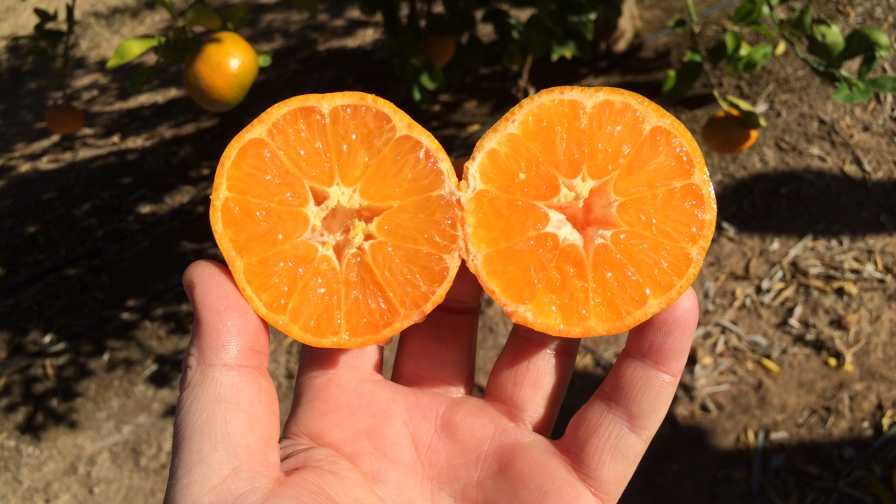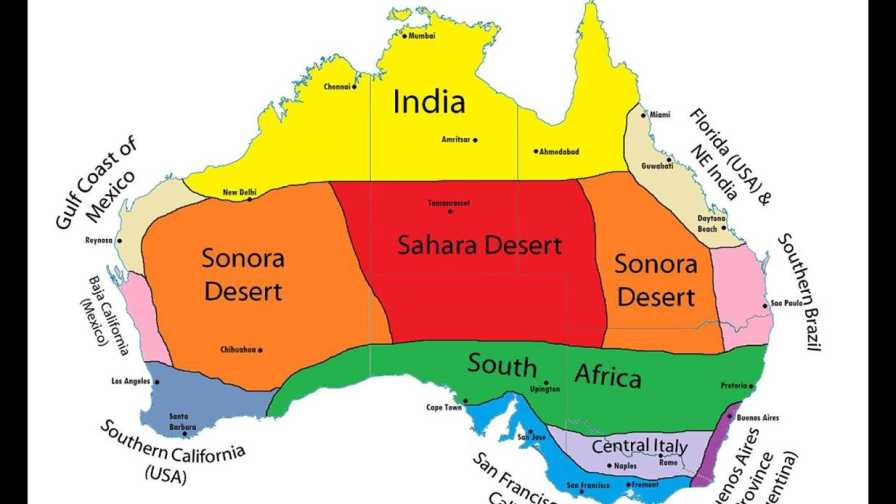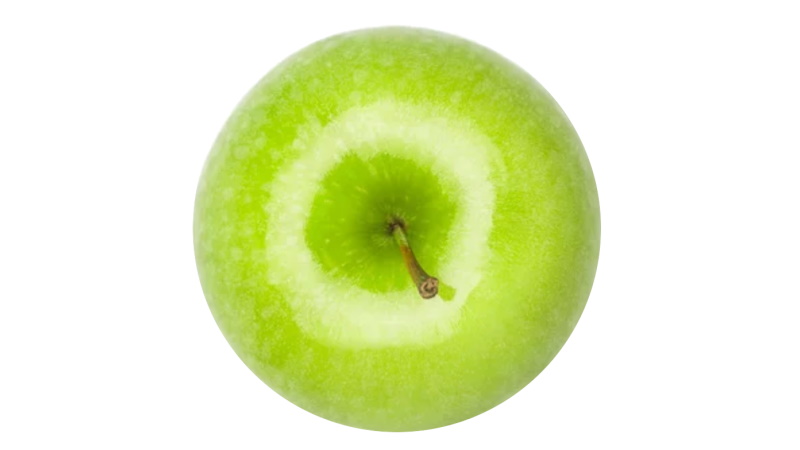In Quest for Low-Seeded Citrus, It Takes Two to Tango

Though ‘Tango’ is only four years into the trial process in Queensland, Australia, initial observations indicate positive results, which could be good news for Florida growers.
Photo by Peter Chaires
Early plantings of ‘W-Murcott’ in Florida were made by growers trying to get ahead of the trend toward easier peeling, low-seeded, or seedless mandarins. Those trees were planted in the early 2000s and were producing harvestable crops by 2005-2006. The first few years of heavy production and relatively good color encouraged more growers to give it a try. Seed counts were higher near sources of viable pollen, but the fruit characteristics were closer to what growers and consumers were seeking. Gradually, ‘W-Murcott’ trees were scattered from the northern Ridge, to the Indian River, to the southern Ridge, West Coast, and southern flatwoods. After Florida experienced a few warm falls, coloration and low acid emerged as new challenges for the variety.
As expected, those on the Ridge and other areas with a myriad of other citrus in the vicinity began to struggle with higher seed counts. In 2009, the first Florida nurseries were licensed for ‘Tango’ — a low-seeded irradiated ‘W-Murcott’ developed by the University of California, Riverside (UCR). ‘Tango’ looked to be a better option for growers looking for a low-seeded mandarin that could be grown in close proximity to other citrus without risk of appreciable increase in seed count. Growers could request commercial licenses to produce ‘Tango’ by early 2010. Though cropping was heavy with both varieties, the crop load tended to be a little lighter with ‘Tango,’ which may have contributed to its tendency to achieve slightly better color and smoother peel than ‘W-Murcott.’ While HLB ravaged the ‘Sunburst’ and ‘Honey-T’ blocks, growers and nurseries continued to come under license to plant ‘Tango.’ ‘W-Murcott’ and ‘Tango’ showed HLB symptoms early, but continued to crop and appeared to be less affected by disease than most specialty varieties.
Fast Forward
While a few mandarin varieties do appear to be more tolerant of HLB than ‘Tango,’ it still fairs better than most. After several warm falls, growers have been faced with an extended bloom period (can range from December to March), and with a range of fruit quality and coloration. While the ‘Tango’ fruit that is packed and marketed has been well received by consumers, growers and packers must manage several rounds of spot-picking and grade out undesirable color and other effects of off-bloom. ‘Tango’ and ‘W-Murcott’ cannot be de-greened with ethylene gas, at least not with our current methods. The inability to de-green forces producers to pick for color and let the grading line ensure that a high-quality product goes in the carton. Packout rates can suffer.
Pre-HLB (what seems like a former life), growers would have drought-stressed the trees, withholding water and nutrition. Eventually, restoring both would spark a large uniform bloom. In our current circumstances, growers are hesitant to stress the trees, as they are already stressed by disease and may crash. This is clearly a conundrum that requires attention. These otherwise valuable varieties require an entirely new management plan if they are to be successful in a subtropical area with endemic HLB. Presently, all useful information is generated from incremental successes achieved by growers who are willing to share with their neighbors. Though ‘Tango’ grown north of Clermont is going to behave differently than Polk County, Hendry, or St Lucie, there also will be some commonalities.

The climate in Queensland, Australia, is very similar to Florida, making observations on ‘Tango’ and ‘W-Murcott’ plantings relevant to citrus growers in the Sunshine State.
G’Day, Australia
New Varieties Development & Management Co. is looking outside of Florida for some answers. We already know that production practices from Mediterranean climates are of little value. There are simply too many variables that differ from our reality. For example, ‘Tango’ and ‘W-Murcott’ grown in arid climates can be harvested with partial or inconsistent color and held in coolers until they color. Thus far, in Florida, even mature fruit with good Brix has not responded to such treatment. Why? We don’t know. However, ‘W-Murcott’ is being produced in Queensland, Australia. Some areas of Queensland have subtropical climatic conditions very close to those of Florida. Though the main production areas for ‘W-Murcott’ (and ‘Tango’) are in arid southern Australia, some good quality ‘W-Murcott’ fruit is being produced in Queensland in subtropical conditions. ‘Tango’ is only four years into the trial process, but initial results indicate ‘Tango’ may be more successful than ‘W-Murcott.’
There is clear value in continuing dialogue between Queensland and Florida.
Next Steps
• Test induced tree stress concept in an HLB-free under cover structure and see if uniform bloom can be achieved.
• Further explore de-greening methods.
• Test trifoliate rootstocks in mid, southern, and coastal areas in Florida.
• Explore possibility of grower trips to and from Queensland.
• Further test the “if they achieve Brix, they will color?” theory. This seemed to be debunked in 2016, as fruit with 14 Brix did not color well.
• Get horticulturists and postharvest physiologists involved.
I would like to express our sincere appreciation to Andrew Maughan of Freshmax for information about ‘W-Murcott’ and ‘Tango’ production in Australia. Freshmax is a shareholder/owner of NuLeaf IP, which is the master licensee for the UCR varieties in Australia and New Zealand. Freshmax also is the licensed marketer for UCR varieties in Australia and New Zealand.
For sure, there’s more to come.










